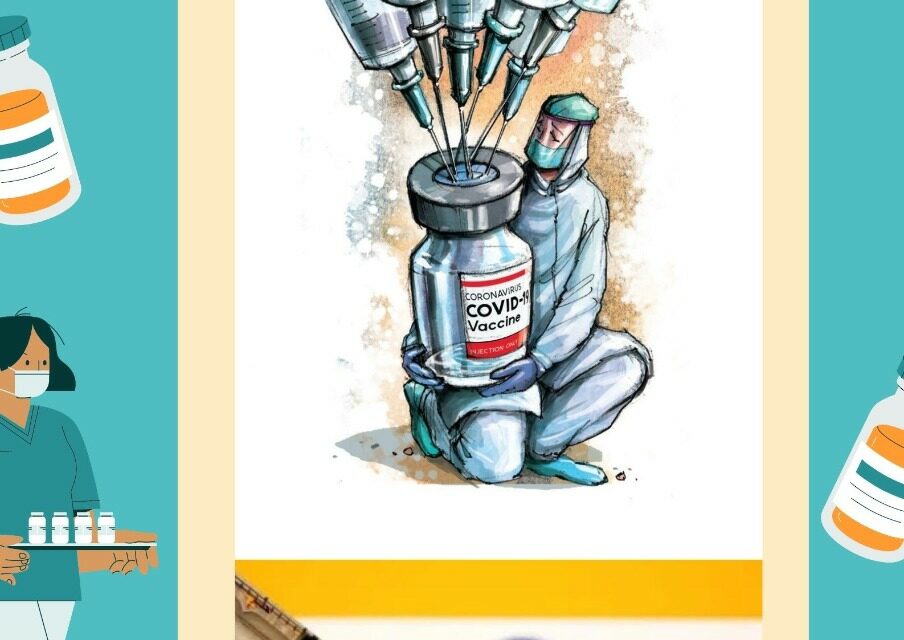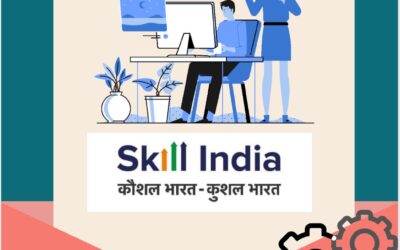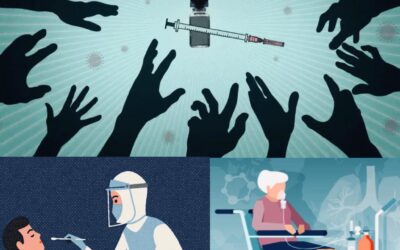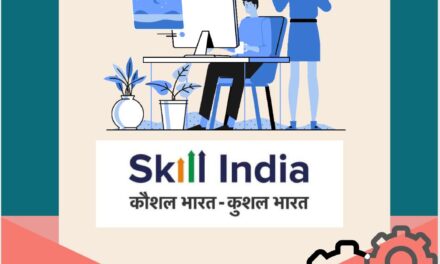India’s COVID-19 Vaccine Rollout Program: Observations and Challenges


Poorva Israni
Introduction
In early December 2019, the first COVID-19 outbreak was discovered in Wuhan, Hubei Province, China, where multiple patients with viral pneumonia were found to be epidemiologically linked to the Huanan seafood market in Wuhan. Since then, the COVID-19 disease is causing havoc across various countries of the world. There isn’t a doubt that in India, which has the world’s second-largest population, the COVID-19 pandemic has caused an uproar. The first case in India was registered on January 30th, 2020, and the country had 107 cases by March 15th, 2020. The number of cases increased tenfold within 15 days from March 15th, 2020, and ever since, the number of positive cases in India has been ceaselessly increasing. Since then, the global community is in a race to develop COVID-19 vaccine doses to create antibodies in humans. As of now, many countries across the globe including India have started vaccinating their citizens/residents. Against this background, this paper tries to evaluate India’s vaccine rollout program. It attempts to observe the challenges of the COVID-19 vaccination policy in India.
COVID-19 Vaccination Policy in India
As soon as there was a COVID-19 outbreak, many attempts have been directed to develop vaccines against the infectious virus to avert the crisis. It is said that a virus outbreak is a warlike condition for the doctors, and in the war against such viruses which are contagious, vaccines have proven to be an important public health resource. For instance, vaccines for poliovirus and measles have proven to be successful in eliminating these infectious diseases in many countries. Subsequently, vaccine trials against the COVID-19 virus were in progress, and soon vaccine rollout programs were being designed across the globe. Particularly in India, the preparation for a full-fledged vaccine rollout strategy began in December 2020. Arrangements for one of the biggest COVID-19 vaccination rollout programs in the world were being undertaken. It was sought that the vaccination drive would employ trained personnel who have had field experience with immunization activities, along with further attempts to train the staff nurses, lab technicians, and pharmacists. The cold chain points were designated as required across states. Furthermore, the National Expert Group on Vaccine Administration for Covid-19 (NEGVAC) was earlier constituted in August 2020 to take significant decisions on various parameters related to COVID-19 vaccines, such as selection and procurement measures for COVID-19 vaccine, strategy concerning financial resources awareness generation amongst the community, preparing a framework for supply chain management, and to track logistics. Along with this the Indian government, initiated training sessions for differential groups, such as doctors and vaccinators as mentioned above, people involved in the cold chain management, and data-entry staff. The Indian government started advocating and informing the community, and various stakeholders about the vaccination process through custom-made modules for vaccinators, digital infrastructure staff, and other groups. An IT platform termed CO-WIN was developed where logistic and beneficiary management, report of distribution of vaccines, and reporting of the after-effects of the vaccine, if any, would be undertaken. Correspondingly, from January 2021 dry run exercises were conducted in various Indian cities to better prepare the personnel involved for future vaccination drives.
In India, the three potential vaccines are Covishield, Covaxin, and Sputnik V. These vaccines are being manufactured in India with the cooperation of both public and private sectors. The Indian government launched COVID Suraksha to make the vaccines accessible and affordable to the community. The government planned to procure the vaccines at subsidized prices as they claimed that it will help to increase the efficiency of the entire vaccine rollout program in economic terms. Sequentially, India in its first phase of the vaccine rollout program started to vaccinate the healthcare and frontline workers from mid-January 2020. In the second phase, vaccinations were provided from March 2020 for those above 60 years, and 45 years with comorbidities. Additionally, all the people above 45 years were eligible to be vaccinated in the third phase which started in April 2020. The last statement regarding the vaccination policy was made by the Indian government in April 2020, where all the people above the age of 18 were entitled to take up the vaccine shots starting May 1, 2020.
First Three Phases of the Indian Vaccination Policy: Observations and Challenges
In the first three phases, the states distributed the vaccine stocks to the government vaccination centers where the vaccine was available free of cost, and to the private hospitals where the vaccine was administered at Rs 250 per dose. Most of the nations including India vaccinated the healthcare and frontline workers in the first phase of their vaccine rollout program. This step was relevant since it was a priority to vaccinate those in the first phase who were treating the COVID-19 infected patients, and who will eventually vaccinate the remaining population. In the second phase, it was seen as logical to vaccinate all the elderly population because studies have shown that they have higher COVID-19 related mortality rates compared to younger individuals. Though this step was seen as logical during the second phase of the vaccination drive, it also carried an inherent concern in accordance with the demographic structure of India. Data shows that approximately 80 percent of India’s population is below 50 years of age. Therefore, even after two months of the vaccine rollout program amidst a pandemic, there were still a large number of people who remained unvaccinated. The effectiveness of the step taken to prioritize the vaccination of the elderly population has been debatable. A mathematical study done on the effectiveness of COVID-19 vaccine strategies in India showed that the prioritized vaccination of people above the age of 60 leads to a larger reduction in deaths than the prioritized vaccination of the other age groups. Alongside, it also showed that vaccination of younger adults (20-40 years) was found to be the most effective in reducing symptomatic infections. For herd immunity to develop in India, which scientists have often said can be the most effective way to fight the deadly virus, vaccinating the larger population under 50 years of age promptly could have been a good course of action to control the virus. In India’s vaccine policy, a major concern is its limitation to a particular section of the population. There are a lot of critical questions concerning the accessibility of the COVID-19 vaccine. For instance – Is the COVID-19 vaccine in India available to the vast majority of Indians? Is the vaccine limited to the people in the urban areas and the elite population? How can the vaccine be made accessible to the poor sections of society?
Moreover, there were many other concerns with the deployment of the vaccine policy in India. The distribution of the vaccines was seen to be complex because of the poor infrastructure of cold chains and storage facilities. This is a major concern since vaccination structures across the Indian cities were to be molded by the robust distribution strategy under the vaccine policy. Such problems in the supply chain could prove to be inefficient and harmful for the success of the vaccine policy because this can hinder the inventory management, and the requirement to fulfill the demand for vaccines. Difficulties in cold chain and storage facilities along with India’s vaccine diplomacy strategy resulted in a shortage of vaccines by April 2020. Though India’s vaccine policy sought to benefit India’s foreign policy in strategic areas, it has widely been argued that India’s intervention of making vaccines available to other countries has had an impact on its citizens. The Indian government in the first two phases has focussed on the exports of the vaccines, and this has caused a shortage of vaccines by the third phase. This has also disrupted vaccine nationalism in India. Vaccine nationalism occurs when a country can secure vaccine doses for its people or inhabitants and prioritizes its domestic markets before making them available to other nations. Hence, the country is left with fewer resources for its citizens, and this has resulted in the loss of trust of citizens in the government machinery. The severe vaccination shortage in India in the midst of a crucial COVID-19 second wave is an output of many factors. For instance, since the second phase, various states had asked the Centre for more vaccine stocks. Along with this, the states requested the Centre to relax the vaccine categories because of the Covid-19 fatality figures which were much beyond the fatality figures of the previous year. But the requests were turned down from the Centre, and as a result, there were several centers where people had to return home because of the shortage of vaccines. Both the manufacturers – Bharat Biotech and the Serum Institute of India lacked funds and government assistance to manufacturing more vaccines in the middle of India running out of vaccine stocks, in spite of warning the Indian government about the difficulties in manufacturing more vaccines. However, the Indian government in the fourth phase has focused on providing funds to the manufacturers to scale up the production of the vaccines. It may be noted that there was no foresightedness to sustain the vaccine rollout program. The question of sustainability can be seen at the intersection of the vaccine program design and the consideration of data-driven policy. To look at whether the vaccination policy was data-driven, we ought to understand whether the Indian government had data on the requirement and demand of the COVID-19 vaccines, population census across states in the preferential order of age group chosen in the four phases of the program.
So far, in the three phases, only the government was procuring the vaccines and distributing them to the states who were then circulating the vaccines at the government centers and private hospitals. As a result, cases of black marketing of vaccines emerged. This can also be a result of the slow pace of the vaccine rollout program along with the eagerness amongst the people for the COVID-19 vaccines. Given the size of the country’s population which is approximately 1.38 billion, statistics show that till April 2021, 6 percent of the total population has been vaccinated with one dose, and less than one percent of the total population is fully vaccinated. It is noteworthy to see that with the surplus of vaccines in the first and second phases of the vaccine rollout program, a meagre 1 percent of the total population of India has been fully vaccinated. Though there is no threshold level at which the vaccinations can contribute to decreasing the rising COVID-19 cases, it can be observed that the current levels of vaccinations will hardly improve the situations of the Indian states amidst the second wave of the COVID-19 pandemic. For example – Chhattisgarh has vaccinated 14 percent of its population till March 2020 but is seeing COVID-19 positive cases quadrupled to about 12,000 daily since April 2020.
Besides these challenges, India has also been encountering problems in gathering public confidence as the effectiveness of vaccines is being questioned by the community. Public confidence is important in battling the COVID-19 pandemic, and lack of trust in the government and its process could prove to be fatal for India and its fight towards the COVID-19 pandemic. These above-mentioned challenges are said to be ailing the vaccine policy of India, and these strategies are failing to develop herd immunity which is essential to stop the spread of the disease within a community. The vaccine rates in India are further declining because of a shortage of vaccines, which will increase the number of people contracting the COVID-19 virus, and this will be in contradiction with the objectives of the vaccine rollout program.
Fourth Phase of the Indian Vaccination Policy: Observations and Challenges
Recently, India rolled out the fourth phase of the vaccination coverage from May 2020. This phase has incorporated several changes in the vaccine policy of India, in terms of procurement, coverage, and several other factors. From May 1, 2020, 50 percent of the vaccines will be procured by the Centre, and 50 percent of the vaccines will be open for the open market to purchase. This step might help in reducing the black marketing of the vaccines because state governments, private hospitals, and other industries would be able to procure vaccines directly from the manufacturers. On the contrary, this could also lead to increased black marketing of the COVID-19 vaccines as people who need to board flights, cross borders, start a new career, or participate in other activities that require proof of vaccination can be highly targeted for the vaccine supplies and other counterfeit items. Therefore, continuous monitoring has to be done to keep a record of the medical supplies, and ad-hoc teams need to be put in place to ensure that black markets are not created. As monitoring is done in cases where there is a lack of trust between the stakeholders, the government can reconsider the preferential order for vaccine accessibility to restore the trust amongst the community and ensure that the requirement for the black markets does not emerge.
The Centre earlier allocated vaccines to states in a way that was driven by demand, but, in the fourth phase, the Centre will allocate half of its share of the vaccines to the states based on the active cases and their performance of the administration. The measurement of these two criteria on which distribution of the vaccines depends will be a tricky activity as currently there are limited specific indicators to effectively measure the performance of the administration in a state. However, this intervention of allocating vaccines based on two criteria can prove to be the right step to address the shortage of vaccines in the most affected states if these two criteria can be measured truthfully.
With the new phase of the vaccine policy, vaccine procurement by large corporate and private groups will decrease the burden on the central budget, which in turn can aid in diverting more funds to the manufacturers of the vaccines. However, the future would tell if this action will help in increasing the pace of the vaccination drive throughout India. The negative output of this step has been differential pricing of the vaccines between the center and the state. In the fourth phase, The Centre will bear the cost of offering free vaccinations to those aged 45 and above, while state governments will be responsible for those aged 18 to 44 on commercial terms that they may negotiate with the manufacturers. This framework will result in a competitive market for the vaccines but will be detrimental for the people, especially for the poor and marginalized sections. A vaccine is considered to be a public good and it will only be fair to bridge the inequality by re-examining the pricing strategy.
In India, the pace of vaccination has come down by almost half of its peak. There has been a drastic drop of 45 percent, and it has been estimated that at the current pace it may take around 32 months for the 18+ population to get fully vaccinated. The drop in the pace has mainly been because of the severe shortage of vaccines, and the initiation of vaccinating an augmented target population base.
Alongside, the Indian government has been taking steps to generate more awareness to burst the myths revolving around the success rate of vaccines by generating awareness through its social media handles. The approach of the Indian government to showcase the vaccination pictures of famous personalities and influencers has helped in increasing the trust of the people in the Indian government. This awareness generation has aided in evoking more responsiveness in the community, especially the youth to get vaccination shots.
Conclusion
The impact of the fourth phase of the vaccination drive in India is yet to be evaluated since it’s in a nascent stage. However, there are some concerns, such as its failure to bridge the digital divide in India as only the people with access to technology would be able to register using all the features of the vaccination drive. Steps need to be taken in this direction so that all the people who are digitally unaware can access the services, especially the poor population. One of the many barriers is that the antibodies which are generated by the vaccines last for approximately 12-18 months, which will lead to recurring expenditure for the central and the state government. Therefore, for the vaccination process to be economically sustainable, and also to avoid further waves in the country, India should focus on achieving herd immunity. Many apprehensions need to be taken care of, such as the fast spread of rumors and misinformation regarding the immunization program and corruption by fake vaccine providers. For the vaccination drive to be successful, weaknesses in the existing system such as shortage of vaccines and funds to manufacture it, delayed regulatory clearances for other vaccines such as Pfizer, poor cold chain infrastructure, the threat of misinformation, and hoarding traps, technological dependency needs to be addressed. The people along with the government have to be a driving force to assure the larger community about the vaccine’s safety and efficacy. The role of the government has to be massive to generate trust in its citizens on its capability to fight against the COVID-19 pandemic, citing the second wave of the pandemic, we know that the government cannot be in an uncompromised situation with the vaccine rollout program.
Poorva Israni is currently in her 1st year of Master’s in Public Policy from Jindal School of Government and Public Policy. She is keen on exploring the domains of Environment and Sustainability, Clean Energy, and Refugee studies. (The opinions expressed in this publication are those of the author/s. They do not purport to reflect the opinions or views of The Policy Observer or our members.)
Related Articles
Skill India Mission and the potential impact of its implementation
As a result, there is a huge problem of employability among the educated workforce of the country. Lack of vocational or professional skills makes it difficult for the youth to adapt to changing demands and technologies of the marketplace.
A Utopian Bio-bubble in Dystopian Time
images of bodies at Nigambodh Ghat in New Delhi or floodlights burning the ground during the match does draw a poignant image & raises a serious question ‘whether it was really necessary to host this year’s IPL in India?’
Hoarding, Supply, and Pandemonium
This second wave of COVID-19, as termed by medical professionals, has been spreading aggressively all over the nation.








